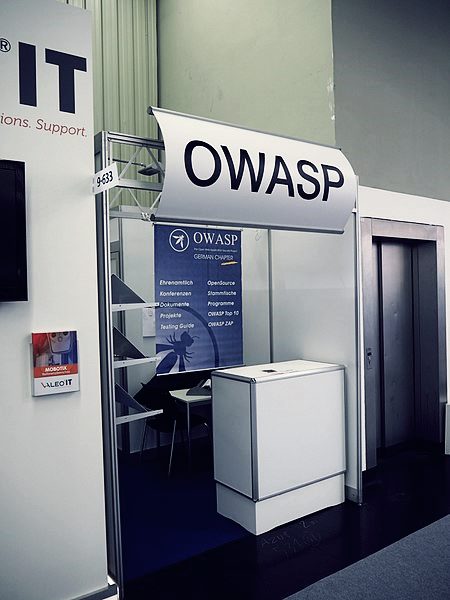
In this article, we will investigate the OWASP Top 10 weaknesses, their likely effect, and systems for relieving these dangers.
Web application security is a basic part of cutting edge programming improvement. As innovation keeps on progressing, so do the dangers and weaknesses that can be taken advantage of by malignant entertainers. The Open Web Application Security Task (OWASP) is a broadly perceived association that spotlights on recognizing and bringing issues to light about the most pervasive security takes a chance in web applications.
Injection:
Infusion assaults happen when untrusted information is shipped off a mediator as a component of an order or question, prompting accidental way of behaving. Normal sorts incorporate SQL, operating system, and LDAP infusion. To forestall infusion assaults, engineers ought to take on secure coding rehearses, for example, utilizing defined questions or arranged articulations, input approval, and result encoding.
Broken Verification and Meeting The executives:
Feeble verification components and imperfect meeting the executives can prompt unapproved access and record split the difference. Executing solid secret phrase strategies, multifaceted verification, secure meeting the executives, and customary meeting lapse can assist with alleviating these dangers.
Cross-Site Prearranging (XSS):
XSS weaknesses permit assailants to infuse malevolent contents into website pages saw by clueless clients. This can prompt meeting seizing, disfigurement, or the burglary of touchy data. Cleaning client inputs, executing yield encoding, and using Content Security Strategies (CSP) are compelling countermeasures against XSS assaults.
Unreliable Direct Item References:
This weakness happens when designers uncover interior execution subtleties, for example, data set keys or filenames, in URLs or APIs. Assailants can control these references to get to unapproved assets. Carrying out access controls, utilizing circuitous article references, and performing legitimate info approval can assist with moderating this gamble.
Security Misconfigurations:
Misconfigured web servers, systems, or application stages can bring about unapproved access, information spills, or other security breaks. Normal security reviews, applying patches and updates, impairing superfluous administrations, and following secure setup guides can limit these weaknesses.
Touchy Information Openness:
Delicate Information Openness is a basic security weakness distinguished by the Open Web Application Security Task (OWASP). It alludes to circumstances where an application neglects to sufficiently safeguard delicate data, for example, passwords, Mastercard subtleties, individual ID numbers (PINs), or other classified information. At the point when delicate information is uncovered, it tends to be caught, got to, or controlled by unapproved people, prompting different malevolent exercises like data fraud, misrepresentation, or unapproved admittance to frameworks.
Delicate Information Openness weaknesses can happen because of a few variables. These incorporate feeble encryption or hashing systems, ill-advised capacity or transmission of information, insufficient access controls, or shaky setups. Aggressors might take advantage of these weaknesses through procedures, for example, network sniffing, listening in, or SQL infusion assaults to acquire unapproved admittance to delicate information.
To relieve the gamble of delicate information openness, engineers ought to follow secure coding practices and execute suitable safety efforts. This incorporates:
Encryption: Touchy information ought to be scrambled both very still (when put away) and on the way (during transmission). Solid encryption calculations and conventions ought to be utilized to safeguard the privacy of the information.
Secure capacity: Touchy information ought to be put away safely, adhering to industry-guideline rehearses. This includes utilizing secure data sets, safeguarding information with solid access controls, and consistently fixing and refreshing programming to address known weaknesses.
Access controls: Executing legitimate access controls guarantees that main approved people can get to delicate information. This incorporates client verification, job based admittance controls, and least honor standards to restrict admittance to delicate data.
Input approval and result encoding: Approving and cleaning client input forestalls infusion goes after that can prompt touchy information openness. Also, yield encoding forestalls the execution of pernicious scripts or code while showing client created content.
Secure setup: Guaranteeing that the application and basic foundation are appropriately designed with secure settings and forward-thinking patches decreases the gamble of information openness.
Normal security appraisals, for example, infiltration testing and code audits, are fundamental to recognize and address potential weaknesses connected with delicate information openness. Carrying out a strong occurrence reaction plan and observing framework can help identify and answer expeditiously to any information breaks or unapproved access endeavors.
By tending to delicate information openness weaknesses, associations can safeguard the security and honesty of touchy data, keep up with client trust, and consent to pertinent information assurance guidelines. It is vital to focus on information security all through the product improvement lifecycle and consistently evaluate and refresh safety efforts to remain in front of advancing dangers.
Missing Capability Level Access Control:

Missing Capability Level Access Control is a security weakness distinguished by the Open Web Application Security Venture (OWASP). It alludes to a circumstance where an application neglects to appropriately uphold access controls at the capability or component level, permitting unapproved clients to perform activities or access assets that they shouldn’t have consent to.
This weakness commonly emerges when an application depends entirely on the confirmation cycle to decide access privileges, without carrying out legitimate approval really looks at all through the application’s functionalities. In such cases, an assailant could control or sidestep the entrance control systems, acquiring unapproved admittance to delicate capabilities or information.
The effect of Missing Capability Level Access Control can be extreme, as it empowers aggressors to perform unapproved activities and possibly compromise the secrecy, honesty, and accessibility of the application and its information. Aggressors could, for instance, access or alter touchy data, carry out regulatory roles, or heighten honors inside the framework.
To moderate this weakness, it is critical to carry out hearty access controls at the capability or element level, notwithstanding verification systems. This includes guaranteeing that each capability or element actually takes a look at the client’s consents and implements the proper access limitations prior to permitting the activity to be executed. Access control checks ought to be performed both on the server-side and the client-side to forestall any likely detours or altering.
Engineers ought to follow the rule of least honor while allocating consents to clients, conceding just the essential access expected to play out their genuine undertakings. Ordinary security testing and code audits ought to be directed to recognize and address any potential access control shortcomings. Also, carrying areas of strength for out administration, secure meeting tokens, and client meeting breaks can assist with forestalling meeting commandeering and unapproved access.
By tending to the Missing Capability Level Access Control weakness, associations can improve the security of their applications, safeguard delicate information, and forestall unapproved access or abuse of functionalities. Sticking to get coding works on, remaining informed about arising dangers, and routinely refreshing and fixing the application can additionally reinforce the general security pose.
Cross-Site Solicitation Falsification (CSRF):
Cross-Website Solicitation Phony (CSRF) is a security weakness distinguished by the Open Web Application Security Task (OWASP). It happens when a pernicious entertainer fools a client’s program into making an accidental and unapproved solicitation to a designated site on which the client is confirmed. This assault exploits the trust that a site places in a client’s program, permitting an aggressor to perform activities for the benefit of the client without their insight or assent.
The effect of CSRF assaults can fluctuate contingent upon the activities that can be performed by the designated site. For instance, an assailant could change the client’s record settings, make unapproved exchanges, erase or alter information, or perform other noxious exercises. The outcomes can go from protection breaks and monetary misfortune to reputational harm for the impacted people or associations.
To forestall CSRF assaults, designers ought to carry out legitimate countermeasures. One usually prescribed approach is to utilize against CSRF tokens, otherwise called synchronization tokens or CSRF tokens. These tokens are interesting and safely created for every client meeting. They are then implanted in HTML frames or remembered for AJAX demands, and the server confirms their presence and rightness for each solicitation. This guarantees that solicitations beginning from authentic structures or pages are acknowledged, while demands without legitimate tokens are dismissed.
Also, designers ought to follow secure coding rehearses, for example, keeping away from the utilization of GET demands for activities that make side impacts, as GET solicitations can be effectively controlled by aggressors. All things being equal, touchy activities ought to utilize POST, PUT, Erase, or other fitting HTTP techniques, which require more purposeful client connection.
Standard security testing, including weakness examining and infiltration testing, is fundamental to recognize and address CSRF weaknesses. It is likewise vital to keep web application structures, libraries, and parts fully informed regarding security fixes and updates, as these frequently incorporate fixes for known CSRF weaknesses.
By tending to CSRF weaknesses, associations can safeguard clients from unapproved activities and keep up with the trustworthiness of their web applications. Carrying out legitimate security controls and following prescribed procedures can fundamentally lessen the gamble of CSRF assaults and guarantee a safer perusing experience for clients.
Utilizing Parts with Known Weaknesses:

The OWASP Top 10 rundown of web application weaknesses incorporates “Utilizing Parts with Referred to Weaknesses” as one of the key dangers that designers ought to address. This weakness emerges when applications consolidate outsider libraries, systems, or parts that have realized security imperfections or weaknesses.
Numerous advanced applications depend on different outer parts to upgrade usefulness, further develop improvement proficiency, or coordinate with different frameworks. In any case, on the off chance that these parts are not consistently refreshed or fixed, they can present security shortcomings that can be taken advantage of by assailants.
Here are a few significant viewpoints to consider while managing this OWASP weakness:
Risk Appraisal: Designers ought to know about the potential dangers related with utilizing outsider parts. It is essential to survey the security stance of the parts and know about any known weaknesses or security warnings related with them.
Weakness The board: Remain informed about security updates, patches, and weakness exposures connected with the parts utilized in the application. Buy into security mailing records, follow important discussions, and influence weakness data sets to get opportune data about any weaknesses found in the parts.
Fixing and Updates: Consistently apply updates and fixes given by the part sellers or maintainers. This guarantees that any realized weaknesses are tended to expeditiously. Lay out a fix the board cycle that incorporates checking for refreshes, testing them in a controlled climate, and conveying them to creation frameworks promptly.
Part Checking: Utilize devices and strategies to follow the use of parts inside the application’s codebase. This can assist with recognizing obsolete or weak parts that should be refreshed or supplanted. Robotized filtering devices and reliance checkers can help with recognizing parts with known weaknesses.
Merchant Notoriety and Backing: Consider the standing and backing given by the part sellers or open-source networks. Pick parts from solid sources that effectively keep up with and update their product. Dynamic people group contribution and fast reaction to detailed weaknesses are positive signs of a part’s security development.
Secure Design: Design the parts safely, following accepted procedures and suggestions given by the part seller or security rules. Handicap pointless elements, empower security includes, and apply secure defaults to limit potential assault surfaces.
Secure Advancement Practices: Integrate secure coding rehearses while using outsider parts. This incorporates appropriate info approval, yield encoding, and secure joining of the parts into the application’s codebase. Figure out the security ramifications of the parts’ APIs and guarantee that they are utilized accurately.
Normal Reviews and Evaluations: Perform customary security reviews and weakness evaluations to distinguish any parts with known weaknesses. This incorporates both static code examination and dynamic testing to uncover potential shortcomings presented by the parts.
By tending to the gamble of utilizing parts with known weaknesses, designers can fundamentally lessen the assault surface of their applications. Carrying out a powerful weakness the executives cycle, remaining informed about part updates, and following secure coding practices will assist with guaranteeing that the application stays secure all through its lifecycle.
It is vital to recall that security is a continuous exertion, and designers ought to keep a proactive methodology by remaining refreshed on arising dangers and weaknesses. By focusing on the security of the parts utilized in their applications, engineers can fabricate stronger and secure programming frameworks.
Unvalidated Diverts and Advances:
Unvalidated Diverts and Advances is one of the OWASP Top 10 weaknesses, featuring the dangers related with ill-advised treatment of client provided input in web applications. This weakness happens when applications divert or advance clients to one more page or site without appropriately approving or disinfecting the client gave information.
The basic role of a divert or advance is to improve client experience and work with route inside a web application. Nonetheless, in the event that these activities are not suitably carried out, an assailant can take advantage of this usefulness to perform phishing assaults or gain unapproved admittance to delicate data.
Aggressors can control the URL boundaries or other client controlled contributions to divert clients to malevolent sites that copy authentic ones. This can prompt different malignant exercises, including phishing assaults pointed toward taking touchy data, for example, login qualifications or monetary subtleties. Also, unvalidated diverts and advances can be used to sidestep access controls and gain unapproved admittance to confined region of an application.
To relieve the dangers related with unvalidated diverts and advances, engineers ought to execute the accompanying accepted procedures:
Whitelist Legitimate URLs: Rather than straightforwardly utilizing client controlled information in divert or advance activities, applications ought to keep a whitelist of confided in URLs. Just permit redirection to predefined, approved URLs to forestall pernicious sidetracks.
Approve and Clean Information: Carry out powerful info approval and sterilization components to guarantee that client provided information is liberated from malevolent or surprising characters. Normal articulation approval, input sifting, and result encoding procedures can be successful in forestalling infusion assaults or malignant sidetracks.
Utilize Safe Divert Strategies: While performing sidetracks or advances, utilize protected and solid techniques given by the programming language or structure. For instance, on account of web applications based on the HTTP convention, use HTTP reaction headers to safely perform redirection.
Teach Clients: Bring issues to light among clients about the dangers related with tapping on untrusted connections or following sidetracks from obscure sources. Urge clients to be mindful and confirm the credibility of sites prior to giving any delicate data.
Security Testing and Code Surveys: Direct customary security testing, including entrance testing and weakness appraisals, to recognize any likely weaknesses, including unvalidated diverts and advances. Also, perform intensive code audits to guarantee that appropriate information approval and divert taking care of practices are followed.
By observing these rules, designers can fundamentally lessen the gamble of unvalidated diverts and advances in their web applications. Ordinary security evaluations and remaining informed about arising assault methods are likewise crucial for stay one stride in front of possible assailants.
All in all, unvalidated diverts and advances represent a critical gamble to web applications, as they can be taken advantage of by aggressors to execute phishing assaults or gain unapproved access. By executing appropriate info approval, utilizing safe divert strategies, and teaching clients about the dangers, designers can actually moderate this weakness. It is significant to focus on web application security and stick to best practices to safeguard client information and keep up with the trustworthiness of the application’s usefulness.
Conclusion:
Web application security is a consistent exertion that requires a proactive methodology from engineers, security experts, and associations. Understanding and moderating the OWASP Top 10 weaknesses is a pivotal move toward building secure web applications. By taking on secure coding works on, carrying out suitable security controls, and remaining informed about arising dangers, engineers can lessen the gamble of double-dealing and protect the honesty and privacy of their web applications and client information.

